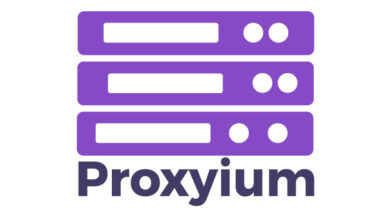
Choosing a headless WordPress site instead of a traditional site architecture can significantly impact SEO. This method divides the website’s front end from its back end, enhancing flexibility and speed. However, it also presents new SEO challenges.
Here’s the deal: Your website’s visibility and how people discover you on search engines depend on your SEO strategies. We will discuss advanced SEO strategies designed explicitly for headless WordPress setups today.
We will discuss how to ensure search engines can crawl your site effectively, adjusting meta tags and other related topics. Whether working on the website or developing marketing plans, you’ll receive helpful advice to improve your SEO abilities.
How to make headless WordPress sites crawlable
Creating crawlable headless WordPress sites comes with distinct challenges not found in traditional setups. The main challenge comes from the way content is displayed on headless websites, which can make it complicated for search engine bots to crawl and index.
Modern techniques such as dynamic rendering and server-side rendering have simplified the process of addressing these issues.
Dynamic Rendering
Dynamic rendering acts as a connection between content heavy in JavaScript and search engine crawlers. Present a static HTML snapshot of your site’s content to search engines while users see the dynamic version.
It enables crawlers to index your site’s content without running JavaScript, leading to better visibility and SEO performance.
For dynamic rendering in a headless WordPress setup, consider using prerender.io or creating a custom server-side rendering setup, potentially with Node.js.
Let’s break it down conceptually:
1. Identifying user agents
It’s important to distinguish between user requests and crawler requests. You can achieve this by examining the user agent in the HTTP headers of incoming requests.
2. Providing static content to bots
When a crawler is detected, your server redirects the request to a pre-rendered, static HTML version of the requested page instead of serving the usual JavaScript-heavy content. You can achieve this by using a prerender service or setting up pre-rendering on your server to generate static HTML pages of your content on the fly or from a cache.
3. Setting up with WordPress
Prerender.io and similar services provide middleware that can easily integrate with your server. This middleware intercepts incoming requests, verifies if they are from crawlers, and either serves a pre-rendered page from prerender.io’s cache or initiates a new render if not cached.
When creating a custom solution, Puppeteer is commonly used in a Node.js environment to pre-render pages. When the WordPress API sends content to your Node.js server, it verifies the user agent. For crawlers, Puppeteer renders the page, saves the static HTML, and serves this version.
To improve efficiency, consider caching static pages to prevent rendering them for each crawler request.
Server-side rendering
Rendering content on the server before reaching the client is known as server-side rendering. When a search engine bot requests a page, it gets a fully rendered HTML page, which makes it immediately indexable.
To achieve server-side rendering, use JavaScript frameworks like React and Node.js to render content on the server. This method helps content become more accessible to search engines and enhances user experience by reducing page load times.
For server-side rendering, consider using frameworks such as Next.js and WordPress’s REST API or GraphQL for a more efficient workflow.
One common approach is retrieving data through GraphQL and generating pages on the server with Next.js, ensuring content is pre-loaded before delivery.
Setting up canonical URLs
Setting up canonical URLs for a headless WordPress site helps preserve SEO integrity, particularly when content is delivered through a decoupled front end such as Gatsby or Next.js.
Canonical URLs indicate the primary content page version to search engines, preventing duplicate content problems. It is essential in a headless environment where content may be accessed through various routes or endpoints.
The Importance of Canonical URLs
Content duplication risk is higher in headless WordPress because the front end is separated from the WordPress backend. Canonical URLs help prevent search engines from indexing the wrong URL by directing them to the preferred one. By consolidating the SEO value to the canonical page, it prevents dilution across multiple versions of the same content.
Setting canonical URLs helps specify which content version should be prioritized in search rankings.
How to set up canonical URLs
Setting up canonical URLs in a headless WordPress setup is made more accessible by using the Yoast SEO plugin in conjunction with WPGraphQL to link Yoast SEO information to your headless system.
Here’s a summary of a process that web developer Andrew Kepson delves into with the help of a few popular plugins.
1. Use the Yoast SEO plugin to manage canonical URLs conveniently and directly in the WordPress admin. When you specify the canonical URL for each content piece, you gain control over the preferred URL from WordPress.
2. The WPGraphQL plugin sets up a GraphQL endpoint for your WordPress site. It enables front-end applications, such as those made with Gatsby or Next.js, to retrieve WordPress content easily, including SEO information from Yoast.
3. Next, use the WPGraphQL Yoast SEO Addon to link Yoast SEO with WPGraphQL and connect the SEO fields, such as canonical URLs, to the schema. Your headless front end can now easily access and utilize the canonical URLs set in Yoast, guaranteeing the correct canonical tags are displayed in your page headers.
4. After installing Yoast and the required WPGraphQL add-ons, you can easily handle your site’s SEO data within WordPress.
5. When you set up your front-end application, you can query SEO data, such as canonical URLs, through WPGraphQL and display it correctly in the head of your pages. It helps search engines accurately identify and index your canonical URLs, even in a decoupled architecture.
Enhancing meta tags in a headless WordPress setup
It’s crucial to optimize meta tags in a headless WordPress setup, especially when using a front-end technology such as React, to enhance your site’s SEO performance. Meta tags are crucial for search engines to comprehend and showcase your web pages in search results. They are essential in defining the title, description, keywords, and other vital information about your pages, which search engines use to index and rank content efficiently.
Meta tags are crucial in summarizing a web page’s content, affecting its appearance in search engine results and click-through rates. For instance, the title tag appears as the clickable headline in search results and plays a significant role in SEO and user engagement.
Meta descriptions offer a quick summary of the page content below the title in search results, enticing users to visit your site.
Using React Helmet to manage meta tags
React Helmet simplifies managing changes to the document head by allowing you to dynamically modify meta tags, page titles, and other head elements. Perfect for headless WordPress sites.
Begin by installing React Helmet in your project using npm or yarn:
npm install react-helmet
# or
yarn add react-helmetOnce installed, you can easily import React Helmet into your components to configure different meta tags. For example, to configure page titles and meta descriptions, you can use the following code:
import { Helmet } from 'react-helmet';
function MyPage() {
return (
<>
<Helmet>
<title>My Page Title</title>
<meta name="description" content="A concise description of my web page." />
</Helmet>
{/* Rest of your component */}
</>
);
}React Helmet can also handle dynamic data, enabling you to adjust meta tags based on props or states in your React application. Flexibility is crucial for customizing real-time SEO metadata for different pages and content types.
You can also handle other crucial head elements such as structured data (using JSON-LD for rich snippets), Open Graph tags for social media sharing, and aspects for improving accessibility.
Improving schema markup
Improving schema markup is crucial for boosting your WordPress site’s SEO, whether in a standard setup or a headless environment.
Schema markup, a form of microdata, enhances your website’s search engine results by displaying rich snippets in search results. These snippets provide detailed information such as star ratings, product prices, etc. It will greatly enhance visibility and increase click-through rates.
In a typical WordPress configuration, schema markup is usually handled using SEO plugins such as Yoast SEO. It makes adding and customizing schema types from the WordPress dashboard easy. These plugins generate code snippets based on your content. It’s incredibly simple to add without having to modify any code.
However, handling schema markup requires more manual effort in a headless WordPress setup. When working with a front-end application such as a React site, you must integrate schema markup into your content as you build your site. You can add schema markup to your HTML using JavaScript or use front-end SEO tools.
To manage the head of your web pages on headless WordPress sites, consider using tools like React Helmet. It can help you add schema markup easily. React Helmet lets you easily set meta tags, titles, and structured data in JSON-LD format within your React components.
Here’s an easy way to manage schema markup in headless environments:
1. Use client-side libraries
Consider using a client-side library such as React Helmet to insert schema markup into your pages easily. Creating JSON-LD structured data snippets and adding them to your pages using React Helmet is essential.
2. Create scripts
Begin by outlining your content’s structure in a JSON format that search engines like Google can interpret. Specify types like Article, Person, or Event and their properties based on Schema.org guidelines.
3. Use available tools
Using server-side rendering techniques, you can include these scripts in your HTML pages, usually in the head section. Google’s Structured Data Markup Helper tool can help you create the right JSON-LD syntax.
Consider optimizing for voice search
When optimizing for voice search in a headless WordPress setup, combining SEO best practices with the technical aspects of headless architecture is essential. Learn how to optimize for voice search in a headless WordPress setup to boost your content’s visibility in voice-input searches.
1. Let structured data do the work for you
We’ve already discussed the detailed implementation of structured data (schema markup), which is essential for optimizing a headless site.
Structured data assists search engines in comprehending the context and content of your website, making it simpler for them to showcase your information when responding to voice queries. When setting up a headless system, manually add schema markup to your React, Vue, or Angular components.
2. Focus on conversational content and keywords
Voice search queries often mirror speech patterns and use conversational language. They tend to be lengthier than text-based searches. When developing content for your website, try to use a conversational tone that mirrors everyday speech. Placing more emphasis on long-tail keywords and question-based queries commonly found in voice searches is essential.
3. Enhance local SEO for “Near Me” searches
Many people use voice search to find local businesses or services nearby. Make sure your headless WordPress site’s content includes local keywords and phrases to optimize it for searches. Keep your Google My Business listing current and use local structured data to boost visibility for local voice search queries.
4. Create FAQ pages and sections
Users who use voice search typically look for fast responses to particular inquiries. Developing FAQ pages or sections with brief answers to frequently asked questions helps you connect with your audience.
Consider creating interactive FAQ sections that retrieve information from WordPress using APIs and present it in a user-friendly way on the website. Organizing these FAQs with clear headings and structured data can improve their visibility in voice search results.
5. Make full use of rich snippets and featured snippets
Organize your content to qualify for rich and featured snippets, which appear prominently in search results.
Organize your content clearly and use schema markup to emphasize important details. Ensure your content API in a headless WordPress environment delivers structured content for front-end applications to generate snippet-friendly formats.
Create well-thought-out taxonomies
Organizing content in a structured, intuitive way in a headless WordPress environment benefits site visitors and search engines through well-thought-out taxonomies.
Here are tips for creating taxonomies that work well for headless sites:
1. Understand your audience and content
Analyze your content to identify central themes and understand what your audience is looking for. This insight will help in creating appropriate categories and tags.
2. Develop categories
Create categories that reflect the main topics discussed on your website. They offer a structured way to organize content into main themes. Ensure your categories are clear and cover all your content without duplication.
3. Use tags for specificity
Tags detail how to highlight specific content elements. They assist individuals, and search engines locate content on more specific subjects within your categories.
4. Make navigation simpler and more efficient
Your taxonomy should improve site navigation, helping users locate content quickly. Use SEO-friendly keywords in your categories and tags to increase your site’s visibility.
5. Keep it clear and avoid repetition
Make sure each category and tag is distinct to prevent user confusion and weaken SEO strategies. Regular audits can assist in refining your taxonomy by merging or deleting redundant categories or tags.
6. Integrate taxonomies in headless
Make sure taxonomies are integrated into a headless WordPress site to ensure categories and tags are accessible through the API and can be used dynamically on the front end.
7. Regularly review and update
Review and update your taxonomy regularly to keep it aligned with your growing site.
Imagining how this would play out in real life can be helpful. Here’s a brief example: Picture a cooking blog with different recipes. It is an example of a well-organized taxonomy:
8. Categories
Blog categories include Cuisine (Italian, Mexican, Japanese), Meal Type (Breakfast, Lunch, Dinner, Snacks), and Special Diets (Vegan, Gluten-Free, Keto).
9. Tags
Categories can be further specified with descriptors such as “Quick Meals” (recipes under 30 minutes), “Holiday” (Christmas, Thanksgiving recipes), or ingredient-based tags like “Chicken,” “Pasta,” or “Avocado.”
Visitors can easily find the recipes they want, whether it’s a quick breakfast, vegan dessert, or traditional Italian dish. It also assists search engines in grasping the blog’s content, enhancing the site’s visibility in search results related to those topics.
Performance metrics to keep tabs on
When running a website with a headless CMS, analyzing performance metrics is essential. Working with a setup that separates front-end display from back-end content management can lead to potential slowdowns. It’s crucial to grasp how well your website is doing.
Remember to focus on traditional performance metrics such as Core Web Vitals and site loading time to achieve optimal SEO performance.
Core Web Vitals
When discussing site performance, it’s essential to highlight Core Web Vitals. Google uses metrics to measure your site’s user experience, focusing on three main areas. Here’s a summary of what those involved:
LCP measures the speed at which the main content of a page loads. Quicker is always better because it means people are accessing your content sooner.
First Input Delay (FID) focuses on responsiveness. Once your page is loaded, how fast can it react to user inputs? Visitors may become frustrated if they click without seeing an immediate response.
Have you ever experienced text or a button shifting right when you were about to click it? That’s how CLS is measured. Stability is crucial in this situation. People should not feel like they are trying to hit a moving target.
Enhancing these metrics may result in a more positive user experience, leading to higher search rankings from Google.
Minifying JavaScript and async loading
Reducing JavaScript size and loading scripts asynchronously can speed up your site’s loading time. Simplifying the code and enabling scripts to run simultaneously without affecting page load helps improve performance on the front end by streamlining backend operations.
Perfecting performance metrics in a headless CMS environment exceeds Google’s requirements. Creating a smooth and captivating experience for your website visitors while ensuring that search engines can quickly discover and prioritize your content. Balancing technical optimization with user-centric design is key to setting your site apart while benefiting from the flexibility headless offers.
Summary
Optimizing SEO for headless WordPress can be manageable. We have simplified the key information to help you improve your website’s visibility and engagement with search engines and real users.
We have covered various topics, from optimizing your site for search engines to enhancing its compatibility with voice search. Consider exploring our Static Site Hosting to improve your headless WordPress site’s performance.



